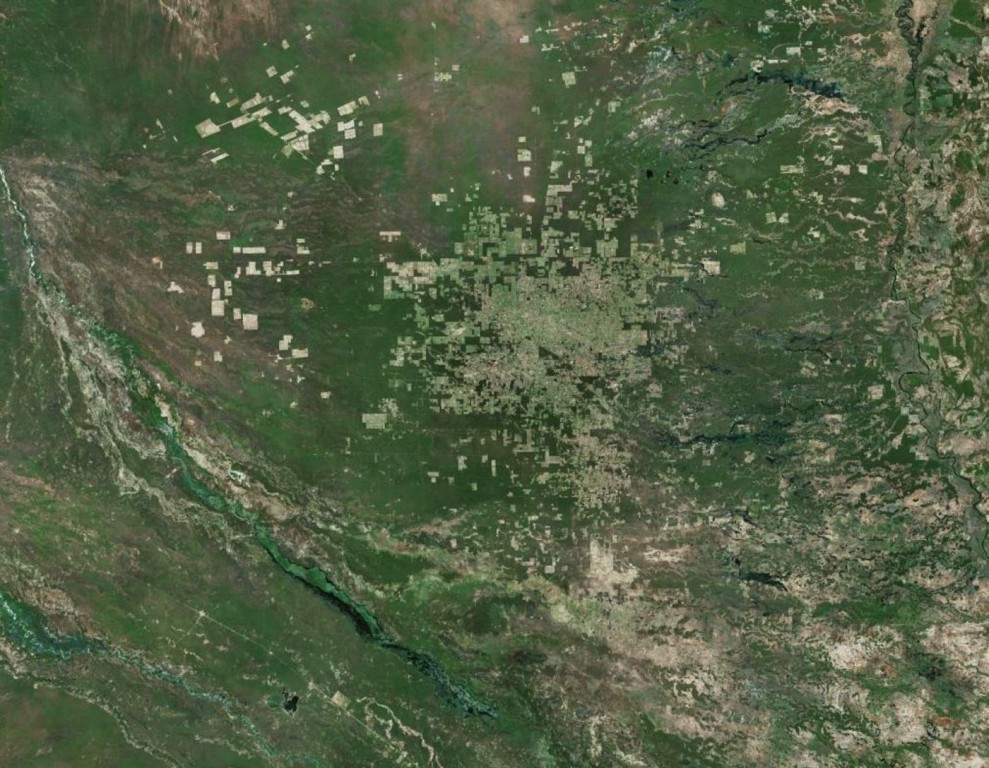Paraguay plans to turn its remote, sparsely populated northwest into an international transport hub and a key link between ports on the Atlantic and Pacific coasts of South America, in a proposal its government likens to a latter-day Panama Canal.
Investment of over $2 billion in basic infrastructure such as roads and bridges aims to transform the Chaco region and boost trade, according to Public Works Minister Arnoldo Wiens. The Corredor Bioceanico will connect ports in Brazil and Chile, while a revitalized highway will span the region from north to south.

While Wiens compared its potential impact on regional trade to that of the Panama Canal in the early 20th Century, Latin America boasts a long history of ambitious infrastructure projects that don’t always materialize. An plan to build two, 13.9 kilometer tunnels through the Andes has made little progress since Argentina and Chile created a joint entity to manage the project in 2010. Still, the vast, semi-arid Chaco is already an important part of the Paraguayan economy as a major producer of beef, dairy and increasingly soybeans, thanks in no small part to Mennonite farmers who settled in the region.
The annual value of goods transported over the current Transchaco highway could more than triple to around $5 billion in about five years with better roads, according to Wiens.
Green Hell
Rapid deforestation is already transforming the brutally hot, ecologically diverse area—once known as the “green hell”—where a large number of the country’s indigenous communities live.
Paraguay faces the challenge of minimizing the environmental impact from large-scale development that sooner or later is going to reach the Chaco, said Yan Speranza, executive director of conservation non-profit Fundacion Moises Bertoni, which manages around 70,000 hectares of private nature reserve in the country.
“Our environmental regulations are very good in general terms,” he said. “The big problem is always the ability of the state to enforce the law. The lack of enforcement capacity is a concern.”
Public Works Push
The government’s plans are part of a larger nationwide building program that includes more than $6.8 billion for highways, water and waste projects. Public works could prove a badly needed lifeline for an economy that has slowed due to weak growth in neighboring Brazil and Argentina. The central bank has signaled it might lower its 2019 growth forecast, which currently stands at 3.2%, when it updates its outlook for the economy on July 25.
While multilateral lenders including CAF and the Inter-American Development Bank will probably provide half of Paraguay’s public works funding needs, Wiens sees the private sector’s participation rising to 30% in a few years from 20% today.
Over the next year 12 months the government plans to tender at least $1.2 billion in public-private partnerships and turnkey projects, including two segments of the Corredor Bioceanico, and that might obtain funding from global capital markets, he said.
Foreign investors have already signaled their willingness to pour money into Paraguayan infrastructure. The consortium that holds a turnkey contract to build the first segment of the Corredor Bioceanico raised $450 million from a global bond sale in May, while a $250 million bond sale next month will fund part of the expansion of Highways 2 and 7 in southern Paraguay under a PPP contract.
That financing “clearly shows the confidence international markets have in the macroeconomic stability of our country,” Wiens said.








